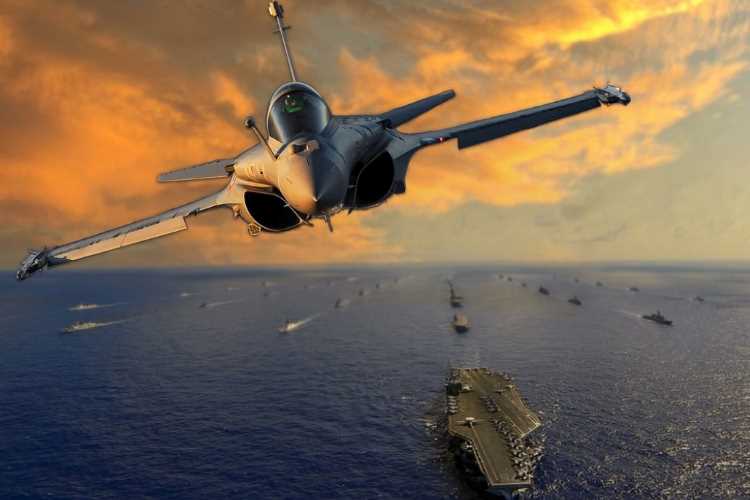
By Mohinder Pal Singh
Budget 2021: Finance minister Nirmala Sitharaman will present the Union Budget 2021-22 in a few days. The Budget 2021 comes in the backdrop of the global economic crisis triggered by the Covid-19 pandemic, the most severe one in almost 100 years. The entire world is looking forward to the defence outlay set aside in the Budget by the Narendra Modi government.
While India is one of the hardest hit by the current crisis, most post-Covid forecasts expect the country’s economy to bounce back faster than the rest of the world to reach the $5 trillion mark in less than 5 years. The service and manufacturing sectors are expected to see the fastest growth on the back of the Make in India campaign launched by the Narendra Modi government.
The country is expected to witness an influx of global firms to set up manufacturing bases. India is turning into a favourite destination of global businesses – both in manufacturing and services. Stable governance, pivotal geographical location, and safe sea lines make India a coveted destination for global firms. That is the reason behind the optimistic projections for the Indian economy that is likely to achieve $5 trillion target by 2027.
READ I Budget 2021: Nirmala Sitharaman should build on these three pillars
Low per-capita defence spending
Defence Budget 2021: As the economy grows, the need to secure the country from aggression through land, sea, and air routes as well as in cyberspace also grows. Towards this end, the country must attach increased importance to defence planning and raise capital expenditure in defence budget. The defence expenditure as a share of GDP has plummeted from 3% in 2001 to 2.1% in 2020. The share of capital expenditure in defence budget also fell from 35% in 2010 to 26% in 2020.
If we compare the six largest economies of the world, India has the lowest per capita defence budget at $52. With China being the closest to India at $188 and US at the top with $2,224. The cabinet committee on security had sought an allocation of 3% of the GDP for defence in 2018. The Budget for the current financial year saw 74% of the allocation going for revenue expenditure, leaving a meagre 26% for capital expenditure.
Capital expenditure goes towards purchase of arms, equipment and modernisation of the forces. Defence equipment like fighter jets, artillery guns and naval vessels are not available off the shelf. They require at least of 10 years of pre-planning and capital allocations.
India’s efforts to become a top global economy will be dependent on its ability to become self-sufficient in defence manufacturing with state-of-the-art technology. Otherwise, a sizeable part of the defence budget will go into importing arms and ammunition. India is the second largest of arms importer in the world at present, just below Saudi Arabia. India’s share in global arms import is 9.2% of the total. This is certainly not a sustainable position for a large economy of India’s size.
READ I PLI Scheme: Is the electronics industry’s window of opportunity closing?
Private sector in defence manufacturing
Defence Budget 2021: India’s huge imports can be attributed to the absence of large domestic arms manufacturers and poor research and development in weapon development. India is importing small arms to large weaponry and equipment from a number of countries. All economically strong nations have strong defence production bases and are reasonably self-sufficient. To achieve self-sufficiency in defence manufacturing, it is necessary to shift from transfer of technology mode to augmenting own R&D. This can be done by incorporating private sector in defence production in a big way.
India should allow private sector to indigenously manufacture weapons and equipment, leaving strategic arms development and manufacturing with DRDO or PSUs. Private sector can play a vital role in arms production, reducing the dependence on imports. To begin with, small arms production can easily be opened up for private sector along with OFBs. This will reduce the country’s import bill.
READ I MSMEs need access to global value chains and cheap funds
When India becomes a $5 trillion economy, the defence budget will reach at least $150 billion, if calculated at 3% of the GDP. In 2020-21, budget allocation to defence stood at $66.1 billion. This means, budget allocation could grow at 17-18% per annum to reach the $150 billion mark in next five years. Many of India’s fighter jet squadrons will need to be replaced in the next 5-10 years. The country will have to think beyond Rafales. To achieve blue-water naval power status, the country needs another aircraft career as well as more nuclear submarines, minesweepers and helicopters. Army needs modernisation of artillery weapons, air defence platforms, radars, modern armour-fitted tanks, helicopters, drones, infantry weapons and armoured carrier vehicles.
All the three forces will need upgradations and replacements of important weapons systems in the next decade. This will need to be dovetailed into the defence budget from now on. If India wants to project itself as an economic power, it must also strengthen its strategic capabilities as a military with influence beyond South Asia.
(Col Mohinder Pal Singh is a defence analyst with EGROW Foundation, a Noida-based think tank.)
